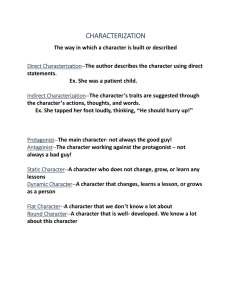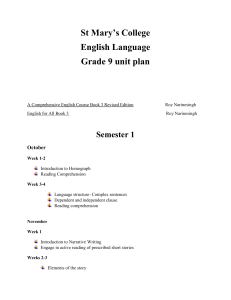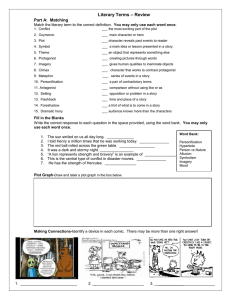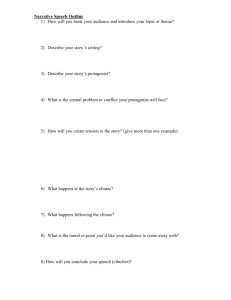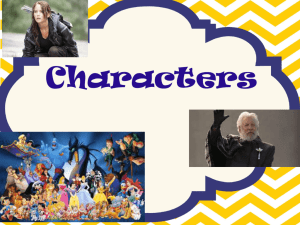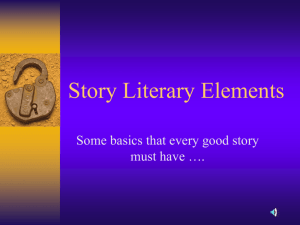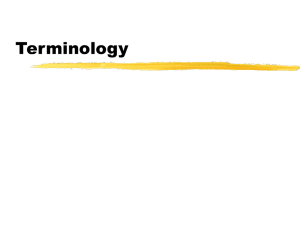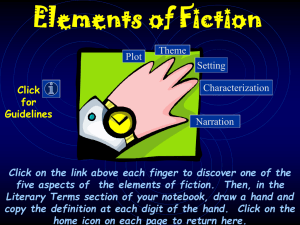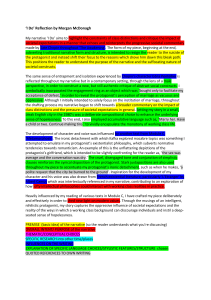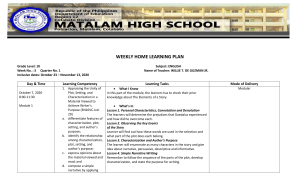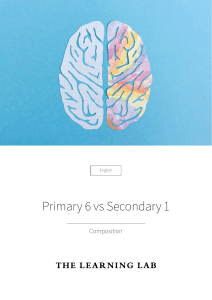Narrative Analysis For short stories and novels
advertisement
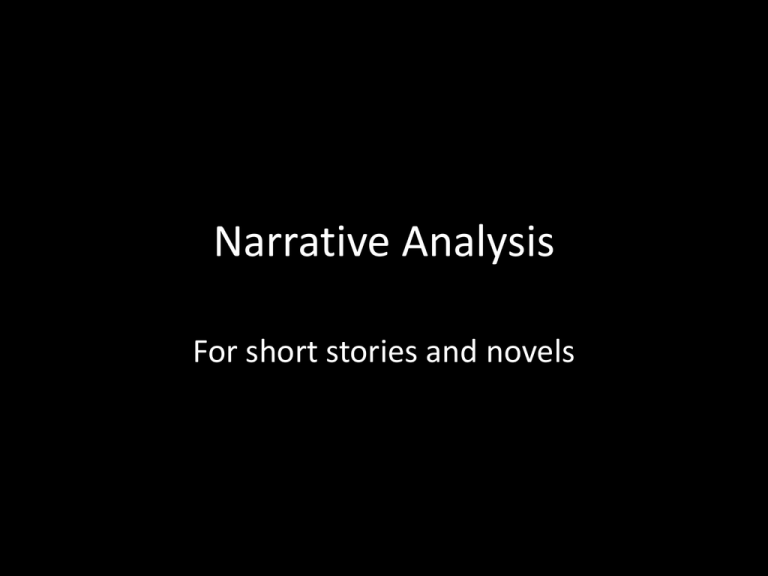
Narrative Analysis For short stories and novels Plot The events that make up a story. Climax Rising Action Beginning Falling Action Resolution Conflict Usually what the plot is centered around. 4 types: • Man versus man (external) • Man versus society (external) • Man versus nature (external) • Man versus himself (internal) Point of view The perspective of the narrative voice • First person (“I”) • Third person (“he,” “she”) -omniscient (all-knowing; can get inside the heads of all characters) -close or limited (no “I” statements, but still from the point of view of one character) Characterization • Direct (“Bill was a sad man.”) • Indirect (“Bill walked slowly along the road. He didn’t talk to anyone.”) 4 types of indirect characterization: • Speech (what does the character say?) • Appearance (what does the character look like?) • Thoughts (what is the character thinking?) • Actions (what does the character do?) Protagonist The main character. The character we are following with most closely. Usually the “good guy”– BUT NOT ALWAYS! Antagonist The character who is in conflict with the protagonist Usually the “bad guy”– BUT NOT ALWAYS! Mood The feeling/emotions the reader gets from a piece of writing. (Hint– the setting usually plays a big part in this!) 3 types of irony • Situational (when the opposite of you’d expect to happen happens) • Dramatic (when the reader or audience knows something the characters don’t) • Verbal (when someone says the opposite of what they mean– often used with sarcasm) Theme statement • A universal truth • Big ideas about life • What message the author is trying to get across Figurative Language • • • • • Metaphors Similes Personification Alliteration Onomatopoeia • • • • • Pun Oxymoron Imagery Extended metaphors Hyperboles Symbolism An object or image in a work of literature which stands for something else. Represents a deeper meaning. Example: the American Flag represents freedom a red rose represents love, etc.
